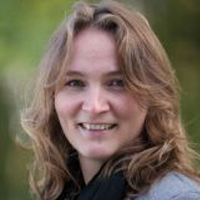Existing literature associates a higher share of women in politics with lower corruption; honesty is viewed as an inherent or static character trait. However, using information collected from 400 elected gram panchayat members in West Bengal, this study finds that spending time in office changes this – inexperienced women politicians are less likely to be dishonest than men, but this ‘gender gap’ disappears among experienced politicians. The study attributes this to reduced risk aversion and stronger political networks with experience.
Increasing female representation in public office has been widely promoted as a way of reducing corruption. Existing research indicates that women are more trustworthy (Rau 2012, Schneider and Bos 2014, Barnes and Beaulieu 2019), more averse to risk-taking (Jianakoplos and Bernasek 1998, Croson and Gneezy 2009, Fletschner et al. 2010), more honest (Friesen and Gangadharan 2012) and lack the political networks necessary for engaging in misconduct (Bjarnegård 2013, O’Brien 2015, Bauhr and Charron 2021). Indeed, evidence from a range of countries, both developed and developing, indicates that a higher share of women in parliament or in the state bureaucracy is associated with lower corruption, with women being termed as “political cleaners” (Goetz 2007).
However, much of this work treats greater female pro-sociality or risk aversion as static and fixed. A nascent literature suggests that time in office and experience change politicians – including their propensity towards corrupt behaviour or lack thereof (Enemark et al. 2016, Afridi et al. 2017, Jha and Sarangi 2019). This points to the need to consider the gender gap in corruption as dynamic rather than static. For example, it has been argued that women are less corrupt and less dishonest when taking up office because they are less embedded in networks that facilitate corruption. This initial gender gap is then expected to narrow with time as women gain access to such networks.
In a recent study (Chaudhuri et al. 2022), we build on this body of work. Our expectation is that, in gender-unequal contexts with widespread corruption, inexperienced women should have a lower propensity towards corrupt behaviour than men, but that this gap narrows over time as women become socialised into the local political culture. We also consider possible mechanisms that explain this changing gender gap in dishonesty due to time spent in office.
Data and methods
Empirical study of dishonesty and corrupt behaviour among politicians is challenging, firstly because elected politicians represent a busy and hard-to-recruit subject pool. Consequently, much work on corruption relies on survey responses or behavioural experiments carried out with university students or ordinary citizens. The drawbacks are that survey responses often suffer from social desirability and self-reporting biases, while behavioural experiments with student participants raise external validity concerns.
To address this knowledge gap, we carried out an extensive field-study involving 400 elected gram panchayat politicians in North 24 Parganas district in West Bengal. We collected data on individual characteristics, as well as data on self-esteem and self-efficacy, perceptions of and attitudes towards politics and political institutions. The politicians also participated in a set of well-validated and incentivised experimental tasks designed to capture preferences for altruism, fairness, trust and trustworthiness, cooperation, attitudes towards risk, and dishonesty.
Panchayat elections were held in West Bengal in July 2018 and most of the panchayat boards were not formed till late-October of that year. We carried out our surveys in September and early-October, immediately after the results were announced. Thus, the newly elected politicians in our sample had no time in political office prior to participating in our survey and experimental tasks.
We compare incoming politicians with no prior political experience (‘inexperienced’) with outgoing politicians (‘experienced’). The inexperienced politicians were elected for the first time in 2018, while the experienced politicians were elected for the first time and entered office without prior experience in 2013. This allows us to examine the propensity towards corrupt behaviour among similar groups of inexperienced and experienced male and female politicians. The key difference between the two groups is the time spent in office, which helps rule out other possible explanations for the change in behaviour over time.
Results
To measure dishonesty, the politicians participated in a die-tossing task (Fischbacher and Föllmi-Heusi 2013): this is a well-established behavioural measure of dishonesty that captures willingness to cheat for personal gain – here participants throw an unbiased die 30 times in private, with payment received according to the number of sixes they report. Substantial evidence suggests that behaviour in this game exhibits strong positive correlation both with the propensity to engage in corrupt behaviour outside the lab (Banerjee et al. 2015, Kröll and Rustagi 2016, Dai et al. 2017, Hanna and Wang 2017) and with country-level measures of corruption (Gächter and Schulz 2016, Olsen et al. 2019).
Figure 1. Distribution of self-reported sixes obtained in 30 tosses of an unbiased die by inexperienced (left panel) and experienced politicians (right panel)
As there is no monitoring of the actual number of sixes obtained, it is impossible to know for sure whether an individual has reported truthfully. However, we can use the deviation of the reported number of sixes from the expected number of sixes in 30 throws of an unbiased die as a group-level measure of (dis)honesty. Figure 1 shows the distribution of self-reported number of sixes obtained in 30 tosses of an unbiased die.
Among inexperienced politicians, women report significantly fewer sixes than men in the die-tossing task; among experienced politicians, this gender gap disappears. We find a large, statistically significant difference between inexperienced and experienced female politicians, but not between inexperienced and experienced male politicians. This is evidence of changing gender gap in dishonesty.
We then test four possible mechanisms that may explain this changing gender gap in dishonesty: differences in pro-sociality, risk aversion, access to political networks, and time-horizons. We find no indications that the initial or changing gender gap is a result of female politicians being more or becoming less pro-social, or that differences between men and women are driven by time-horizons. We do, however, find evidence in support of both the risk-aversion mechanism and the network mechanism: we find that the greater dishonesty on the part of experienced female politicians is driven primarily by reduced risk aversion and a strengthening of political networks over time, with the initial gender gap being driven by politicians who enter politics without a political network. The absence of an effect for males may be explained by the fact that, unlike women, men are already well integrated in village politics.
Conclusion
There are differences between men and women in all societies – but if these differences are due to experiences and socialisation, rather than inherent traits, they must be recognised as both context-specific and changeable. Women may be less prone to corruption when they enter politics, but exposure to the political game, particularly the normalisation of dishonesty and corrupt behaviour, is likely to change them. Our study from West Bengal indicates precisely this: that women who enter politics are less likely to engage in dishonest behaviour than men, but that this gender gap narrows with time in office.
Our findings suggest that a reduction in risk aversion and a strengthening of their political networks are responsible for these changes. With greater gender differences in how the first term in office is experienced – for example, if women face more hostility – the trajectories and time-horizons of women and men may also differ. More research is needed to establish whether women and men are indeed socialised into the same political environment. Regardless, our study of real-life politicians lends little support to the idea that women’s entry into political institutions will help clean out corruption or other malfeasance – except, perhaps, briefly.
Hence, the instrumentalist view that women’s entry into politics will help root out corruption needs to be tempered by the recognition that any such effects may be short-lived and for lasting change, increased female representation will need to be accompanied by changes to the local political culture.
Further Reading
- Afridi, Farzana, Vegard Iversen and MR Sharan (2017), “Women political leaders, corruption and learning: Evidence from a large public program in India”, Economic Development and Cultural Change, 66(1): 1-30.
- Banerjee, Ritwik, Tushi Baul and Tanya Rosenblat (2015), “On self-selection of the corrupt into the public sector”, Economics Letters, 127: 43-46.
- Barnes, Tiffany D and Emily Beaulieu (2019), “Women politicians, institutions, and perceptions of corruption”, Comparative Political Studies, 52(1): 134-167.
- Bauhr, Monika and Nicholas Charron (2021), “Will women executives reduce corruption? Marginalization and network inclusion”, Comparative Political Studies, 54(7): 1292-1322.
- Bjarnegård, E (2013), Gender, Informal Institutions and Political Recruitment: Explaining Male Dominance in Parliamentary Representation, Springer.
- Chaudhuri, Anashish, Vegard Iversen, Francesca R Jensenius and Pushkar Maitra (2022), “Time in Office and the Changing Gender Gap in Dishonesty: Evidence from Local Politics in India”, American Journal of Political Science (forthcoming).
- Croson, Rachel and Uri Gneezy (2009), “Gender differences in preferences”, Journal of Economic Literature, 47(2): 448-74.
- Dai, Zhixin, Fabio Galeotti and Marie-Claire Villeval (2017), “Cheating in the lab predicts fraud in the field: An experiment in public transportation”, Management Science, 64: 1081-1100.
- Enemark, Daniel, Clark C Gibson, Mathew D McCubbins and Brigitte Seim (2016), “Effect of holding office on the behavior of politicians”, Proceedings of the National Academy of Sciences, 113(48): 13690-13695.
- Fletschner, Diana, C Leigh Anderson and Alison Cullen (2010), “Are women as likely to take risks and compete? Behavioural findings from Central Vietnam”, The Journal of Development Studies, 46(8): 1459-1479.
- Friesen, Lana and Lata Gangadharan (2012), “Individual level evidence of dishonesty and the gender effect”, Economics Letters, 117(3): 624-626.
- Gächter, Simon and Jonathan F Schulz (2016), “Intrinsic honesty and the prevalence of rule violations across societies”, Nature, 531(7595): 496-499. Available here.
- Goetz, Anne Marie (2007), “Political cleaners: Women as the new anti-corruption force?”, Development and Change, 38(1): 87-105.
- Hanna, Rema and Shing-Yi Wang (2017), “Dishonesty and selection into public service: Evidence from India”, American Economic Journal: Economic Policy, 9(3): 262-90.
- Jha, Chandan Kumar and Sudipta Sarangi (2019), “Women and corruption: What positions must they hold to make a difference?”, Journal of Economic Behavior & Organization, 151I: 219-233.
- Jianakoplos, Nancy A and Alexandra Bernasek (1998), “Are women more risk averse?”, Economic Inquiry, 36(4): 620-630.
- Kröll, M and D Rustagi (2016), ‘Shades of dishonesty and cheating in informal milk markets in India’, Technical report SAFE Working Paper No. 134, Goethe University Frankfurt.
- O’Brien, Diana Z (2015), “Rising to the top: Gender, political performance, and party leadership in parliamentary democracies”, American Journal of Political Science, 59(4): 1022-1039.
- Olsen, Asmus L, Frederik Hjorth, Nikolaj Harmon and Sebastian Barfort (2019), “Behavioral dishonesty in the public sector”, Journal of Public Administration Research and Theory, 29(4): 572-590.
- Rau, HA (2012), ‘Trust and Trustworthiness: A Survey of Gender Differences’, in S McGeowen (ed.), Psychology of Gender Differences.
- Schneider, Monica C and Angela L Bos (2014), “Measuring stereotypes of female politicians”, Political Psychology, 35(2): 245-266.




 16 November, 2022
16 November, 2022 







Comments will be held for moderation. Your contact information will not be made public.